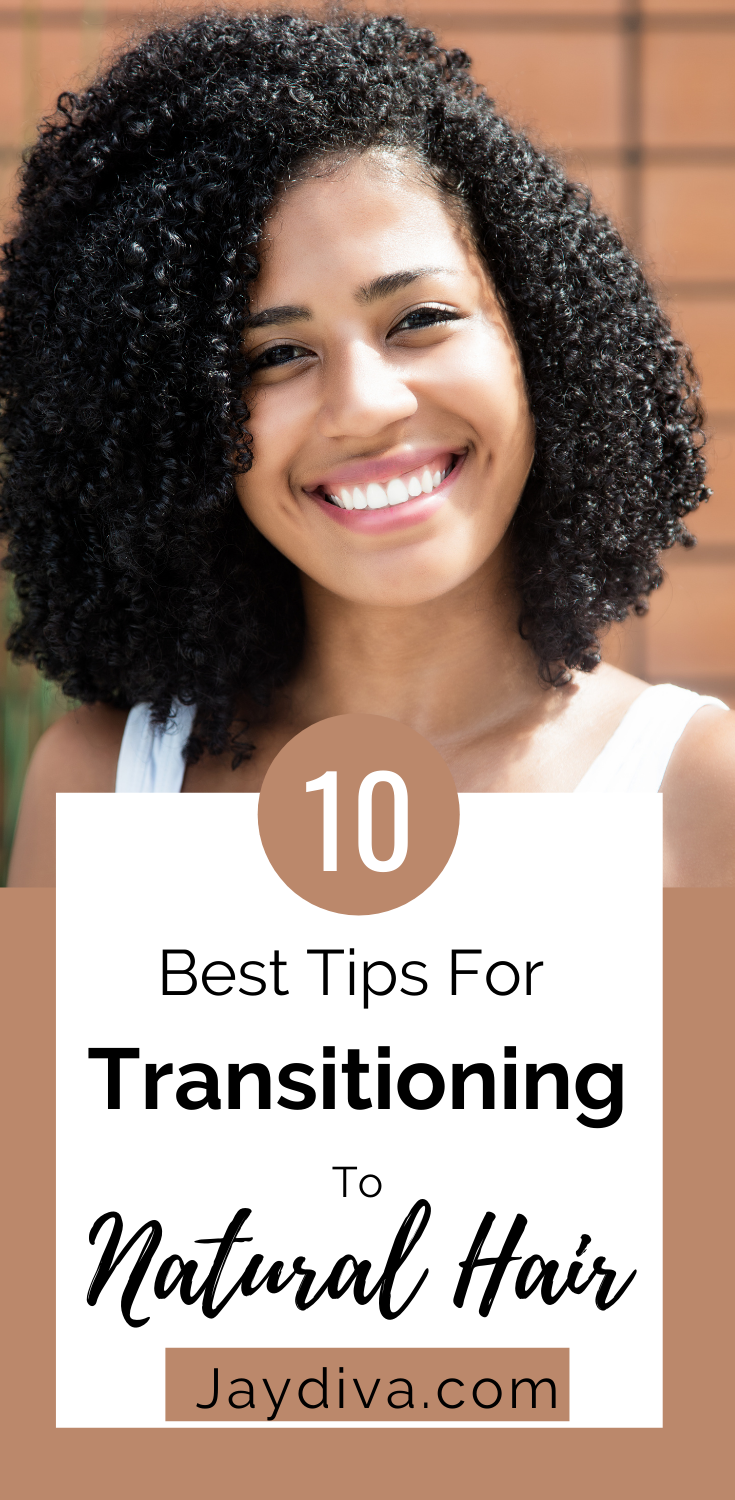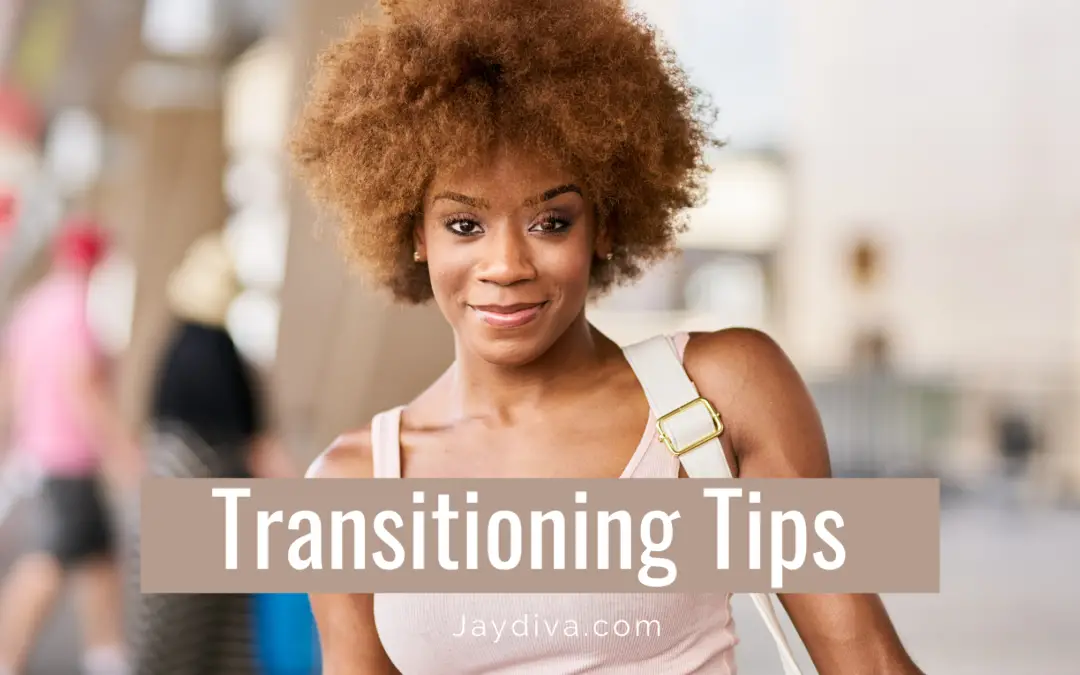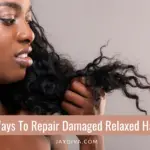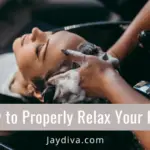Transitioning from relaxed to natural hair without cutting your hair is usually the preferred method by many transitioners, myself inclusive. I recently big chopped my transitioning hair at 10 months post relaxer and i will be sharing with you the 10 best tips for transitioning to natural hair i picked up during my transitioning journey
So if you are just beginning your transitioning to natural hair journey, either from relaxed or from heat damage then this post is for you.
So grab a cup of coffee, tea or something… and let’s dive in
This post contains affiliate links, we earn a commission when you purchase through these links at no additional cost to you.
Pin For Later!

Table of Contents
10 Best Tips For Transitioning to Natural Hair
When transitioning to natural hair there are a few tips that if incorporated will ease the process for you. I’ve made a couple of posts on transitioning hair that covers things you need to know before you start your transitioning journey, the best products for transitioning to natural hair and how to grow your transitioning hair with braids.
WATCH THE VIDEO
1) Get a Protective Style That Works for You
Transitioning hair can be very difficult to handle when your new growth gets to a significant length .
So picking a transitioning hair style that works for you is very important at this point.
In the beginning of my transitioning i wore my hair in low buns but as the new growth started to kick in, i moved on to flat twists and then stuck to kinky twists made with braid extensions.
If you don’t want to use extensions, you can wear styles that blend both textures . Styles like braid outs, twist outs, Bantu knot outs and flexirod sets work really well. The idea here is to keep your hands off your hair for as long as you can.
RELATED: How to grow transitioning hair with braids
2) Be Gentle with Your Hair
The point where your relaxed hair meets your transitioning hair is called the line of demarcation and this are can be really fragile.
So whenever you want to handle your hair you need to be very gentle with it.
Work in sections and use a wide tooth comb when detangling. I always work in a minimum of 4 sections. Now am natural with my hair been really short i work in even more sections
Then sleep on a satin pillow case or wear a satin bonnet. This prevents dryness that can result from your pillow case absorbing the moisture from your hair, and also reduces breakage from friction.
3) Prepooing On Wash Days Is Essential
This is another tip that helped me reduce my frustration on wash days
A prepoo is anything you apply to your hair before you wash your hair. When we cleanse our hair it removes dirt and even beneficial oils from our hair and depending on the type of cleanser, some can be very drying.
So using a prepoo infuses moisture to the hair and prevents excessive drying that could occur with shampoos
You can prepoo anywhere from 30 minutes to even overnight. I usually prepoo with an oil blend the night before my wash day, this is very convenient for me. This gives the oils time to penetrate the hair and deeply nourish my hair
You can prepoo with oils, an instant conditioner or a deep conditioner.
My favorite oils for prepooing are Extravirgin olive oil, coconut oil, sweet almond oil, grape seed oil and avocado oil.
4) Keep Your Hair Moisturized
One thing i noticed for sure while transitioning to natural was that my natural hair was much drier than my relaxed hair. So what i did on a regular basis was to deep condition my hair weekly when it wasn’t in a protective style. And then deep condition before putting my hair in braids.
I alternated between a moisturizing and a protein deep conditioner to maintain a moisture-protein balance.
5) It’s Ok to Trim as You Go
I know you might have set a goal to transition for a year or 18 months before doing the big chop. But sis you don’t have to wait till then to trim your ends.
Trimming my ends periodically helped minimize matting and tangling of my hair.
When transitioning from relaxed to natural hair, its important to trim as you go.
I had my first trim at about 5 or 6 months post relaxer after that i think i trimmed every month. Every time i took down my kinky twists at trimmed off some ends.
At the beginning of my transitioning journey, i had planned to trim every 3 months but i just couldn’t wait to get rid of all the relaxed ends 🤪
So do what suits you and is working for your current hair and how you feel
6) Listen to Your Hair
Listening to your hair is key to taking better care of your hair. Your hair will tell what is working and what isn’t.
Sometimes we use products that just don’t work for our hair and this is not because the product has a bad formulation, it could just be that its not formulated for your hair porosity type. So paying close attention to your hair will help you with that.
A deep conditioner that worked while you were relaxed may just sit on your hair and do absolutely nothing for you as you grow more natural hair on your transitioning hair journey.
I used both aphogee pro vitamin leave in and the aphogee keratin and green tea restructurizer leave in conditioners when i was relaxed and they worked out fine. But my transitioning hair didn’t really absorb these products in with the more new growth i goti realized heavier creamy leave ins worked better.
7) It’s Ok to Big Chop
If you are like me then you love long hair. I grew my hair to waist length while relaxed and so I had gotten used to having long hair.
So you can imagine why the thought of cutting all my hair off was just not an option.
I initially planned to transition for a year, but I just got tired of dealing with my transitioning hair at the 10th month and i decided to big chop. But i was so worried about how short my hair would, how i would style it, how fast i could grow it
I was just working myself up for nothing
And this is what i told myself “ its just hair and it will grow back”
And then i cut it and I’m glad i did
If you get to that point just cut it off. It’s your hair , your rules, you decide what you want.
8) Detangle your Hair Properly on Wash days
This is another key point in transitioning from relaxed to natural hair with ease. Before you wash your hair please please please 🙏 detangle it properly first.
Before you begin detangling its important to put your hair in sections first.With so much hair to deal with it is important to work with your hair in sections.
I begin with finger detangling before moving on to using a wide tooth comb. If it helps, you can use a detangling spray to ease the process.
If you are not in the mood to patiently detangle your hair before washing then just don’t. Because you will be left with so much matting and …. Just don’t do it
9) Avoid Heat at All Cost
Staying away from heat when transitioning is very important. I learnt this early on in my relaxed hair journey that “heat is not your friend”
So with that been said I’m not much of a heat styler, it was very easy for me not to reach out for heating tools
Heat damages the hair and breaks the bonds, leaves your dry just leaves it prone to breakage.
If you use heat excessively while transitioning you incur heat damage, in other words, when you big chop, your hair will look like your relaxed hair and you will need to transition again from heat damage this time to natural hair.
10) Be Patient
I left the best for last. Patience is the oil that will keep your transitioning engine going.
The whole idea of transitioning from relaxed to natural rather than big chopping from the get go is to try to grow as much natural hair as you can before you cut off your hair.
So you need patience to be able to achieve this.
Remember that if you get tired of transitioning its always fine to big chop.
Hope you found the post helpful, if you did please share.

























